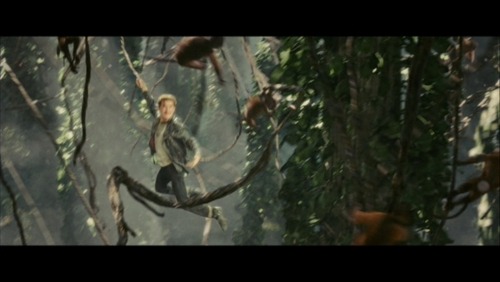To help resolve this controversy, scientists looked at two complete shoulder blades from the fossil "Selam," an exceptionally well-preserved skeleton of a 3-year-old A. afarensis girl dating back 3.3 million years from Dikika, Ethiopia. The arms and shoulders can yield insights on how well they performed at climbing. (Shown here, Selam's cranium, face and mandible.) CREDIT: Image courtesy of Zeray Alemseged / Dikika Research Project

1 posted on
10/29/2012 2:12:45 PM PDT by
SunkenCiv
To: SunkenCiv
Maybe because Lucy *was* an ape.
3 posted on
10/29/2012 2:38:14 PM PDT by
sigzero
To: SunkenCiv
4 posted on
10/29/2012 2:41:10 PM PDT by
Bratch
To: SunkenCiv
7 posted on
10/29/2012 2:46:24 PM PDT by
JediJones
(Vote NO on Proposition Zero! Tuesday, November 6th!)
To: SunkenCiv
..the socket for the shoulder joint was pointed upward in both Selam and today's apes, a sign of an active climber. In humans, these sockets face out to the sides. Now, I thought that evolutionary theory was such that a trait that was beneficial would always overpower, or at least remain neutral to, those traits that were detrimental, or otherwise of negligible benefit. So, even after 3 million years, one might expect that a trait for more powerful shoulders, would be more of a survival imperative than proportionally weaker ones. In point of fact, there are many characteristics of early hominid development that would increase survivability over what the human race has inherited.
8 posted on
10/29/2012 3:02:30 PM PDT by
Thommas
(The snout of the camel is in the tent..)
To: SunkenCiv
She’s got some ‘splainin’ to do!
To: SunkenCiv
I spent half of my life before age fifteen in trees. Maybe I’m a throwback?
11 posted on
10/29/2012 3:17:04 PM PDT by
darth
To: SunkenCiv
Lucy is a joke, by a desperate professor, at the end of his tour and funding.
Parts found half a mile and depths apart, yet attributed to same critter, and WaLa! It’s transitional!
16 posted on
10/29/2012 3:41:33 PM PDT by
G Larry
(Which of Obama's policies do you think I'd support if he were white?)
To: SunkenCiv
“Lucy”. Anyone know the circumstances of finding the bones called Lucy?
22 posted on
10/29/2012 5:13:44 PM PDT by
count-your-change
(You don't have to be brilliant, not being stupid is enough.)
To: SunkenCiv
Almost nobody believes that this is anything but a monkey. I’m sorry but the partial skeleton is only a monkey and isn’t man’s early relative. That man evolved is clear, but this monkey is not proof of it. It’s simply proof that a vane old man wants glory for a spectacular find which really isn’t. The whole thing is silly.
FreeRepublic.com is powered by software copyright 2000-2008 John Robinson


